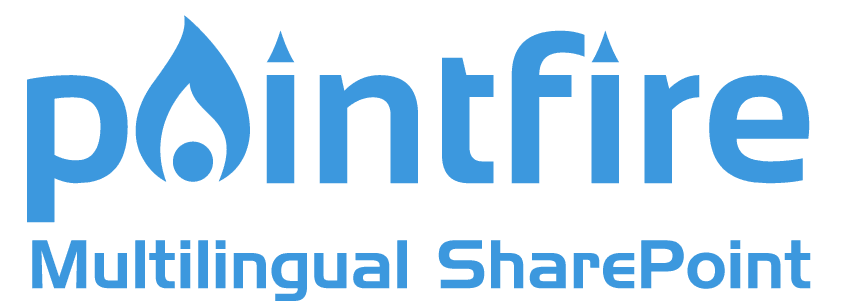If you've used other versions of PointFire, either on premise or SharePoint Online, the language toggle works the same way: you select a language in your personal menu, and when your language preference is changed, you will see the entire page in your new language, both the interface and the content.
When you look at lists or libraries, only the items that are in your language are visible to you, although all language-specific versions of the content reside in the same list or library. Same for modern webparts. Like for classic webparts, any modern webpart can have a language associated with it, the language(s) in which it will appear. A page can contain a webpart that only appears in English, one that only appears in French, and one that only appears in Dutch. Alternatively, you can have different localized pages, each having a localized webpart, and the one you see is the one in your language. Like in other versions of PointFire, list view webparts are filtered by language, both in classic and modern experience. And for both classic and modern experiences, all localizable elements of the user interface are put it a list, machine translated, and, after you confirm the translations are correct, applied to the site.
Perhaps the most exciting news about this impressive multilingual capability is the brand new PointFire Batch Translator. It also works on Communication sites. Nothing else does; the internals of Communications sites are quirky and undocumented. SharePoint's Machine Translation Service uses the old Bing translation engine, but PointFire Batch Translator uses the latest deep neural network models. For Asian languages than means good quality translation, not virtual gibberish. You can compare the two on the translate.ai site. Unlike the Machine Translation Service, translation is not delayed or throttled. It's scriptable using PowerShell, and it supports many other document types, including Excel, PowerPoint, and PDF.
The Batch Translator is available in beta right now. If you would like to try it, contact sales@icefire.ca All other functionality mentioned is in the official release of PointFire 365.
Perhaps the most exciting news about this impressive multilingual capability is the brand new PointFire Batch Translator. It also works on Communication sites. Nothing else does; the internals of Communications sites are quirky and undocumented. SharePoint's Machine Translation Service uses the old Bing translation engine, but PointFire Batch Translator uses the latest deep neural network models. For Asian languages than means good quality translation, not virtual gibberish. You can compare the two on the translate.ai site. Unlike the Machine Translation Service, translation is not delayed or throttled. It's scriptable using PowerShell, and it supports many other document types, including Excel, PowerPoint, and PDF.
The Batch Translator is available in beta right now. If you would like to try it, contact sales@icefire.ca All other functionality mentioned is in the official release of PointFire 365.
